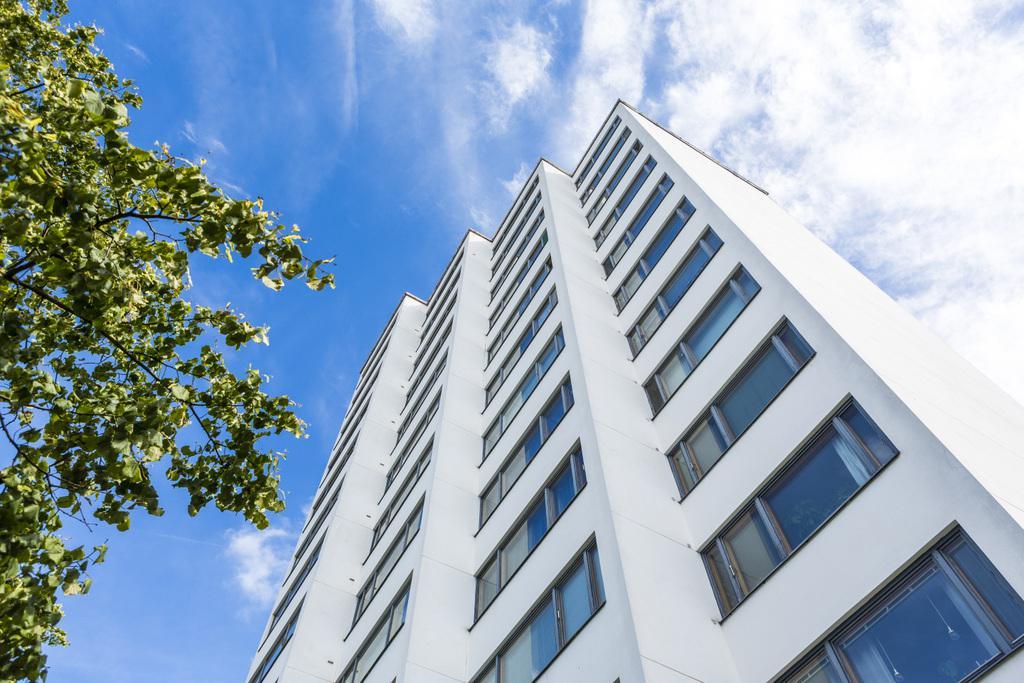
Duration: 2 hours
Length: 6,8 km
In total, there are nearly 30 buildings designed by Alvar Aalto in the Jyväskylä region – ranging from his earliest work to designs made during his final stages. These include both private properties and public buildings, such as the Jyväskylä City Theatre, the University campus and AaltoAlvari Aquatic Centre. Alvar Aalto bicycle tour lets you see the center of Jyväskylä, while showing off the architecture of Alvar Aalto in different city districts.
Currently, Jyväskylä is known as a city of sports, and the region offers varied bicycle and hiking trails for people of all skill levels. What better way to see the works of the renowned architect than a bicycle tour? The beautiful lake landscape colors the hilly terrain, and the region offers a number of bicycle and hiking trails popular among the locals.
Our Alvar Aalto bicycle tour lets you see the center of Jyväskylä, while showing off the architecture of Alvar Aalto in different city districts. The bicycle tour starts at the Aalto2 -museum center (number 1 on the map), continuing to the center of Jyväskylä and towards the lake landscapes of Taulumäki and Viitaniemi. The tour then returns to the city center, visiting the University of Jyväskylä, one of the most architecturally interesting campus areas in Finland.
Route description
- Aalto2 Museum Centre
Alvar Aallon katu 7, 40600 Jyväskylä
- Casa Laurén 1925–1928
Vapaudenkatu 12, 40100 Jyväskylä
- Jyväskylä Administrative and Cultural centre 1964–1982
Vapaudenkatu-Kilpisenkatu-Hannikaisenkatu-Gummeruksenkatu, 40100 Jyväskylä
- Defence Corps Building 1926–1929
Kilpisenkatu 8, 40100 Jyväskylä
- Nikolainkulma
Vapaudenkatu 53, 40100 Jyväskylä
- Workers’ Club 1924–1925
Väinönkatu 7, 40100 Jyväskylä (At the intersection of Väinönkatu and Kauppakatu)
- Renovation of Nuora House 1923–1924
Hongikontie 9, 40200 Jyväskylä
- Viitatorni 1957–1962
Viitaniementie 16, 40720 Jyväskylä
- Aira House 1924–1926
Tapionkatu 2, 40100 Jyväskylä
- Jyväskylä University Seminaarinmäki Campus 1951–1971
Seminaarinkatu 15, 40100 Jyväskylä
- Villa Karpio 1923
Lehtisenkuja 1, 40600 Jyväskylä
Route on Google Maps
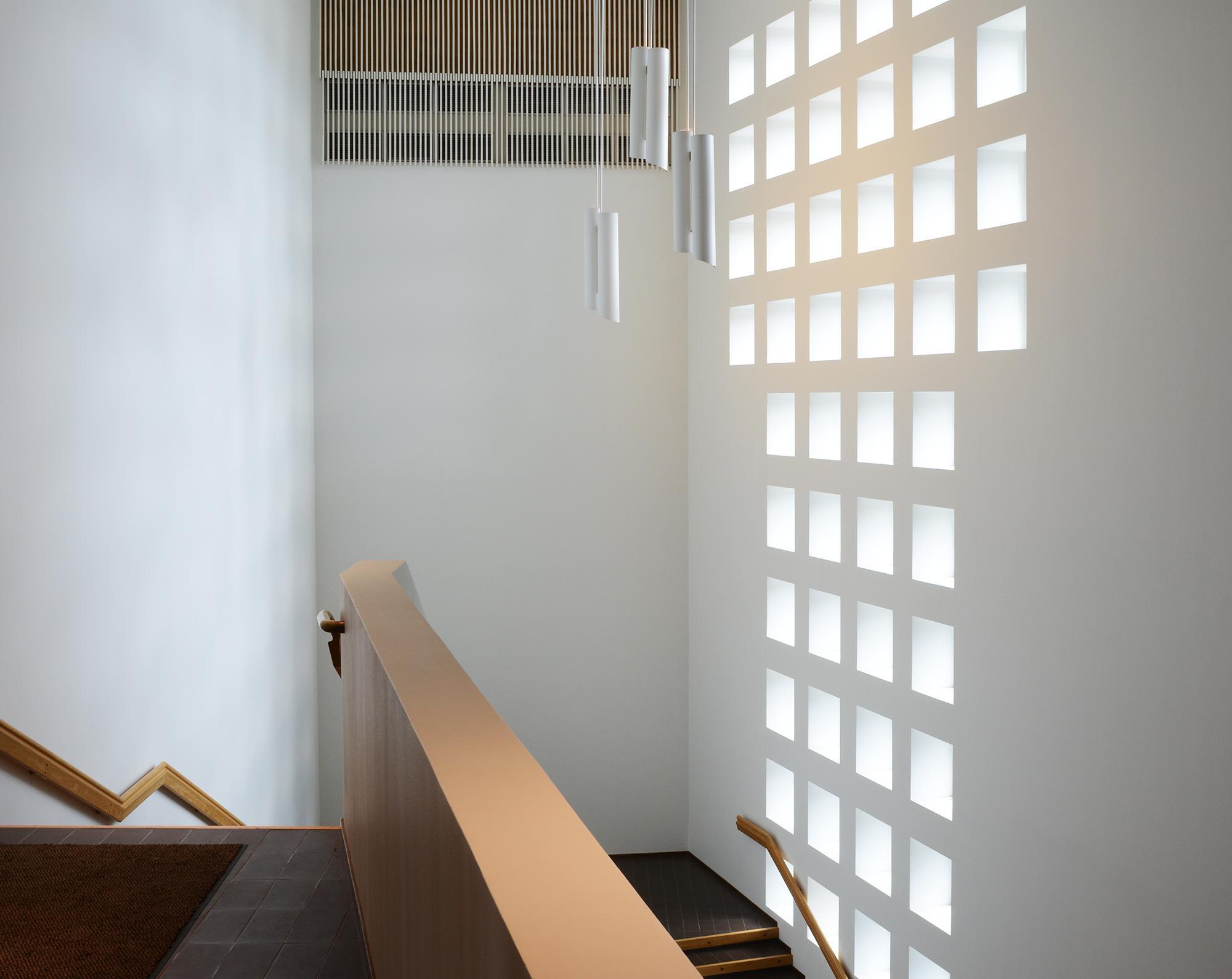
In Lahti and Jyväskylä, Alvar Aalto and Eliel Saarinen’s architectural masterpieces are on vivid display.
Begin your journey in Lahti and encounter Aalto’s tranquil mastery at the Church of the Cross, resonating with spiritual harmony, and Saarinen’s meticulous Art Nouveau in Lahti City Hall. In Jyväskylä, see Aalto’s Muuratsalo Experimental House and Säynätsalo Town Hall, culminating in a comprehensive experience of Finnish architectural heritage. This tour weaves through the legacy of two Finnish greats, their distinctive yet complementary styles forming a rich tapestry of design right in the middle of Finland. Each structure narrates a tale of architectural evolution, challenging and reshaping your perceptions, leaving a lasting impression of their transformative influence.
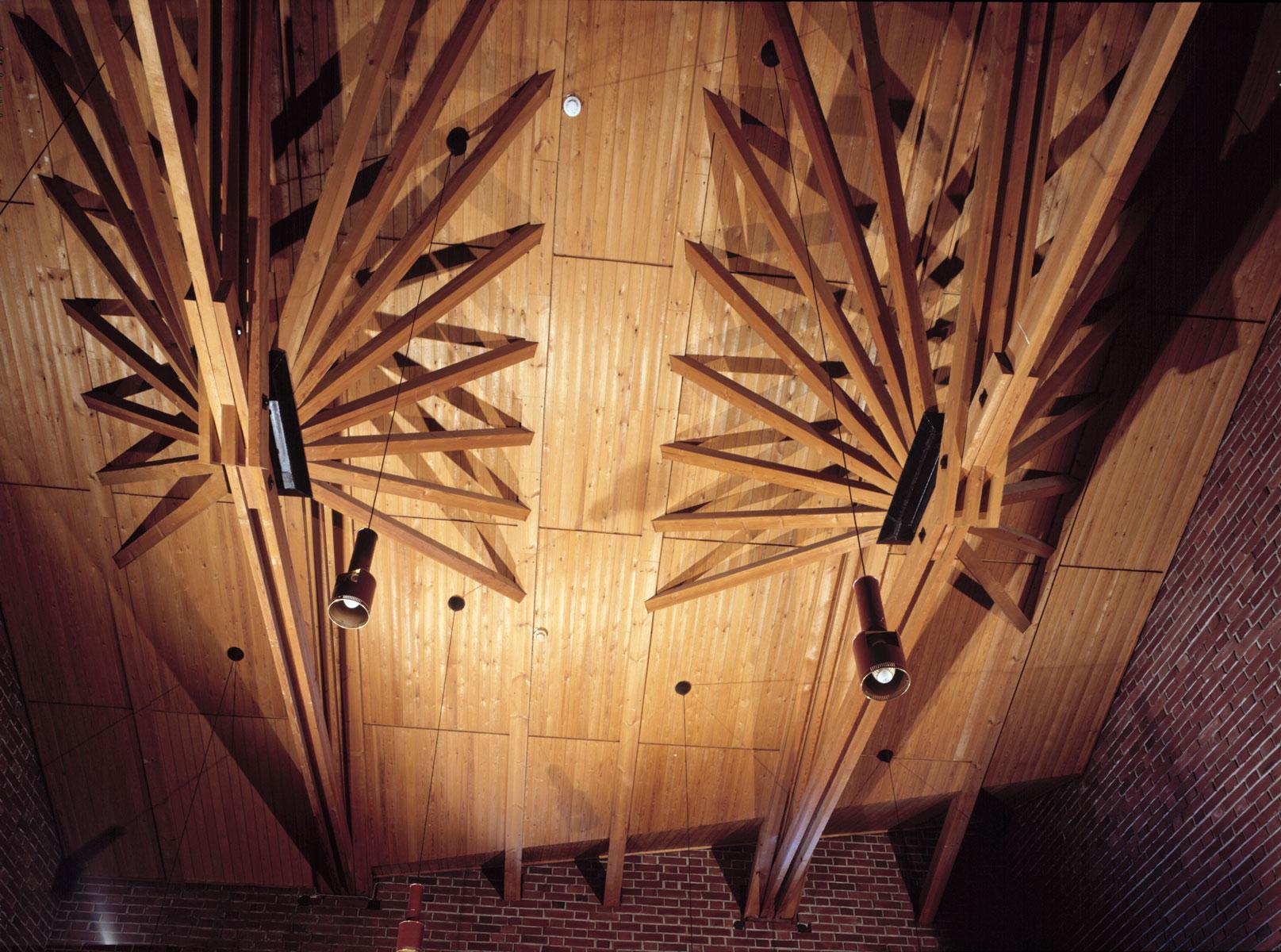
Explore this architectural gem where Aalto’s vision of form and function is realised in each minute detail.
This tour offers more than a simple walkthrough—it invites you to stay and soak in the community spirit that the building embodies. As you explore this space, you have the unique opportunity to extend your
visit with an overnight stay, allowing you to fully immerse yourself in the unflustered landscape that inspired Aalto’s design and experience the communal essence of the thinking behind his designs.
Tour in brief: Join us at the Säynätsalo Town Hall, a cherished historical gem reflecting Alvar Aalto’s brilliance. Uncover the stories and facts of Alvar and Elissa Aalto during our guided tour, which is
suitable for all ages and backgrounds.
Why not extend the experience with an overnight stay? That way, you can create an even deeper connection with this iconic masterpiece and live like a local in our warm, inviting atmosphere.
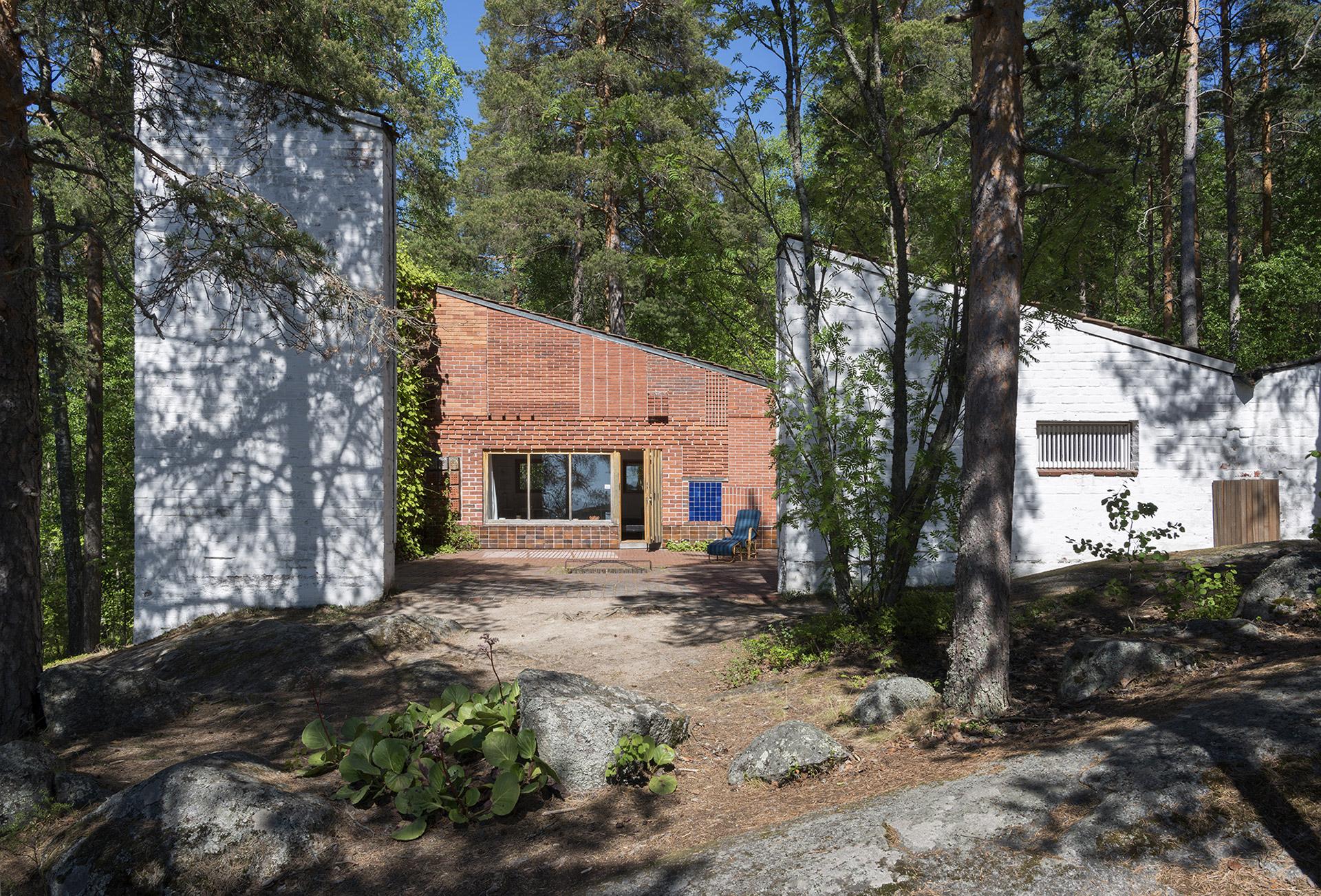
Embark on a country-spanning odyssey to discover the heart and soul of Alvar Aalto’s architectural legacy. Begin in Turku, where Aalto’s modernistic early works stand as monuments to his evolving style. Find yourself in Helsinki, where the iconic Finlandia Hall and the Academic Bookstore exemplify his philosophy of form following function. In Jyväskylä, the Aalto2 Museum awaits, a space where Aalto’s genius blurs the lines between practicality and artistry.
Journey to Säynätsalo to admire the Town Hall, a beacon of community and design, and explore the Muuratsalo Experimental House, a canvas of Aalto’s daring creativity. Venture to Kauttua Ironworks in Southwest Finland, a magnificent home to six Aalto structures, including the Terraced house and riverside sauna. Finish up at Villa Mairea, a residential marvel that harmonises with the natural world. This tour is a true tribute to Aalto’s vision, a chance to see the built environment through his transformative lens.
This five-day tour commences in Turku with Aalto’s first modernist works and progresses throug Helsinki’s iconic landmarks, such as the Finlandia Hall and the Academic Bookstore. The tour then ventures to the historically rich Kauttua Ironworks, followed by visits to Säynätsalo Town Hall and the Muuratsalo Experimental House. The excursion concludes with a tranquil stay at Villa Mairea, a serene
architectural haven.
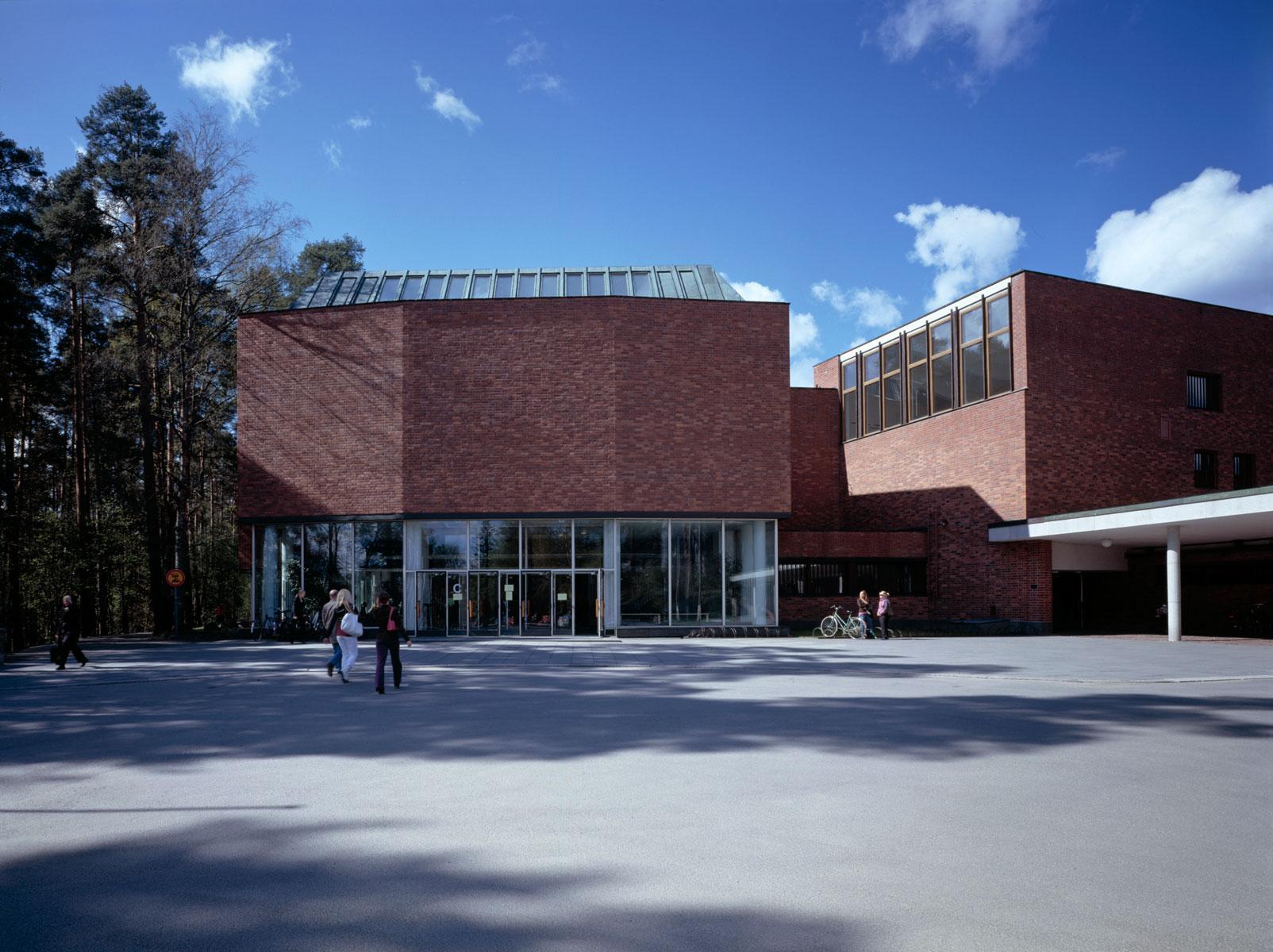
This experience is an intimate exploration of Aalto’s structural poetry: the University of Jyväskylä Campus, a testament to his genius. The serene Säynätsalo Town Hall. Then add the architectural allure of the Jyväskylä City Theatre, a stage for cultural narratives, and the spiritual resonance of Muurame Church.
Each visit isn’t to a site but to a story—a narrative shaped by Aalto’s dedication to innovation and elegance. Dive into the depths of architectural marvels and discover spaces that redefine the essence of form and function.
Discover Aalto’s diverse architectural phases in a three-day tour of the Jyväskylä region. From the early classicism to functionalism and from renowned Säynätsalo Town Hall’s architecture in brick to the Jyväskylä City Theatre’s monumentalism, this tour blends Aalto’s heritage with the Petäjävesi Old
Church’s heritage and the natural beauty of Lakeland, complemented by local hospitality.
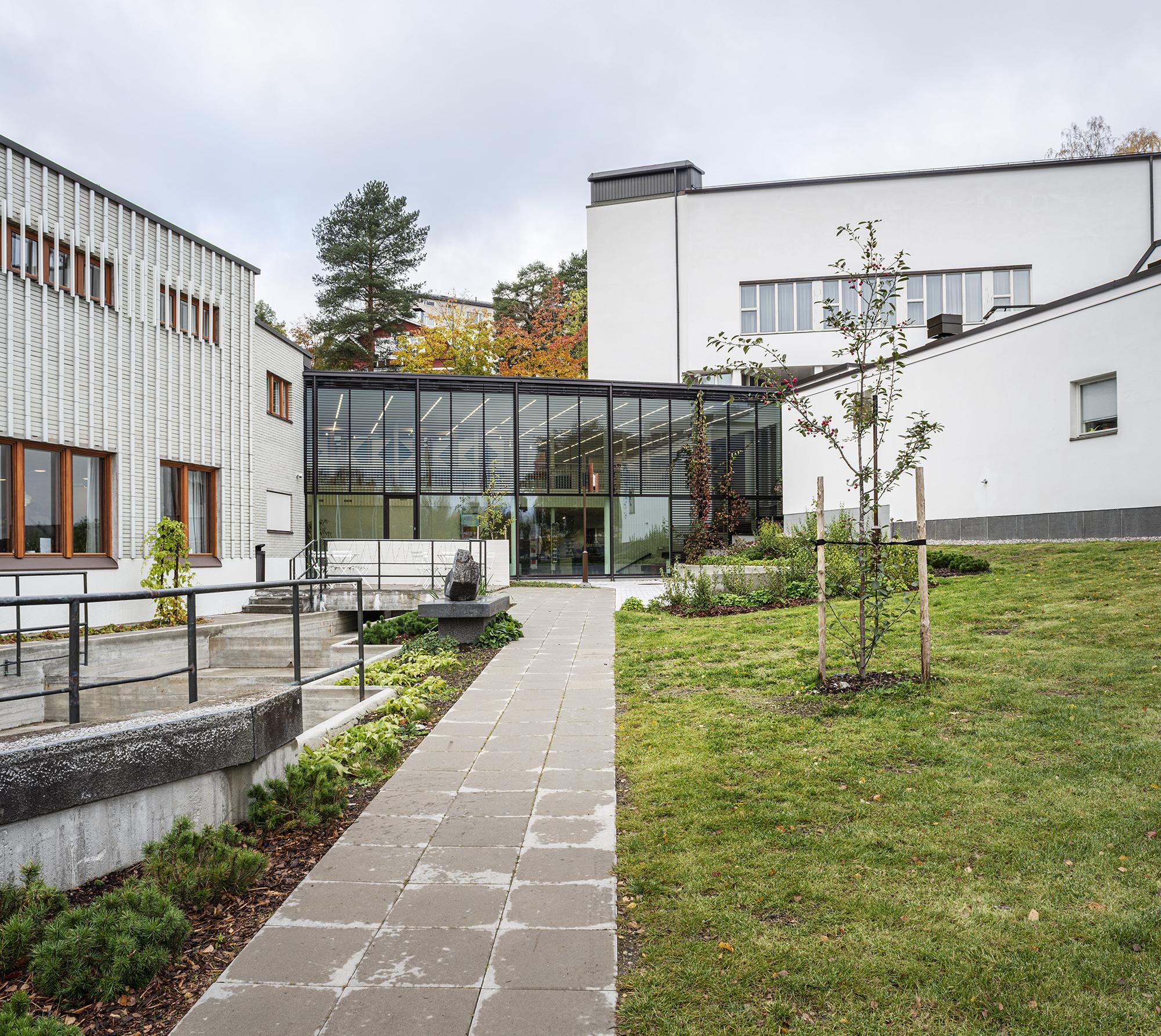
Aalto2 is a unique meeting place for architecture, design and cultural heritage in Jyväskylä in the heart of Central Finland. It combines two buildings designed by Alvar Aalto: the Museum of Central Finland and Alvar Aalto Museum. The Museum of Central Finland (1959–1961, 1991) focuses on the cultural history and heritage of Central Finland. The Alvar Aalto Museum (1971–73) belongs to the Alvar Aalto Foundation and is custodian of the material and intellectual legacy of the world-famous architect and designer. The museum buildings are connected by a new, light-filled section designed by A-Konsultit Architects. The new part (completed in 2023) houses the museums’ shared social area as well as the Aalto2 Shop and Café.
Aalto2 fulfils Alvar Aalto´s wish to create a forum that brings together a variety of artforms. The Aalto2 Museum Centre seamlessly combines architecture, design, cultural heritage, art and science. The Museum Centre puts on an interesting, multifaceted exhibition programme, as well as new events for different target groups. Find out more about the Aalto2 Museum Centre on our website. The Museum Centre’s multifunctional facilities are superbly suited to business meetings and evening events.
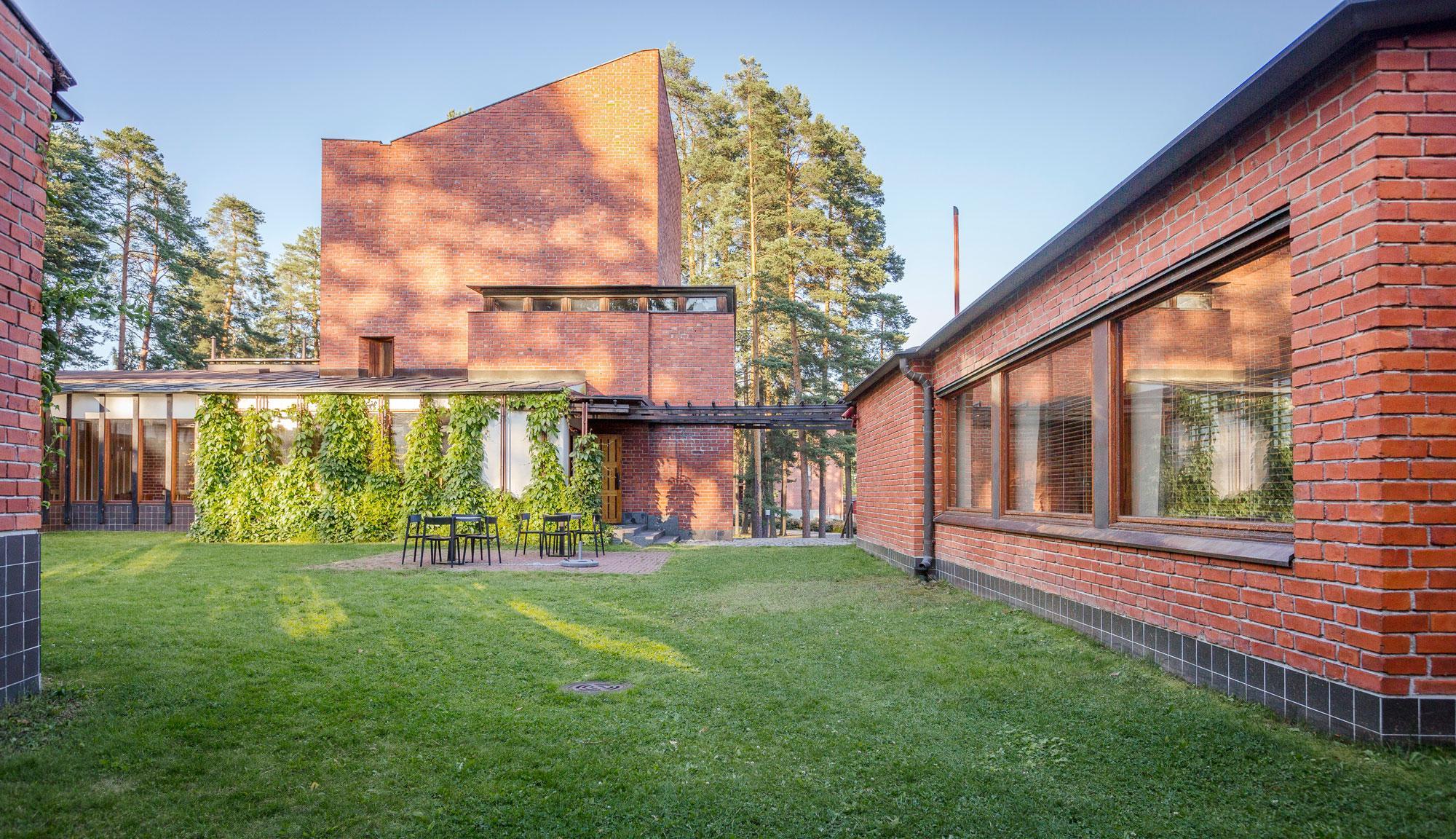
Experience Alvar Aalto’s legacy in the city known as the “Alvar Aalto capital of the world,” Jyväskylä. This unique tour immerses you in a cityscape that showcases the most comprehensive collection of Aalto’s work, spanning every phase of his career.
Discover Aalto’s architectural masterpieces, where modernist design meets everyday life. On this journey, you’ll do more than just see architecture; you’ll live it. Sleep, dine, and even relax by the water, all within spaces crafted by Aalto’s hand.
Jyväskylä is where Aalto’s story began: he opened his first architectural office here, started a family, and created his nearby summer retreat. It is also home to the world’s only Alvar Aalto Museum, housed in a building he designed himself.
Throughout the tour, witness the evolution of Aalto’s style—from his early classicism, through the warmth of his red-brick period, to the crisp lines of his monumental white structures.
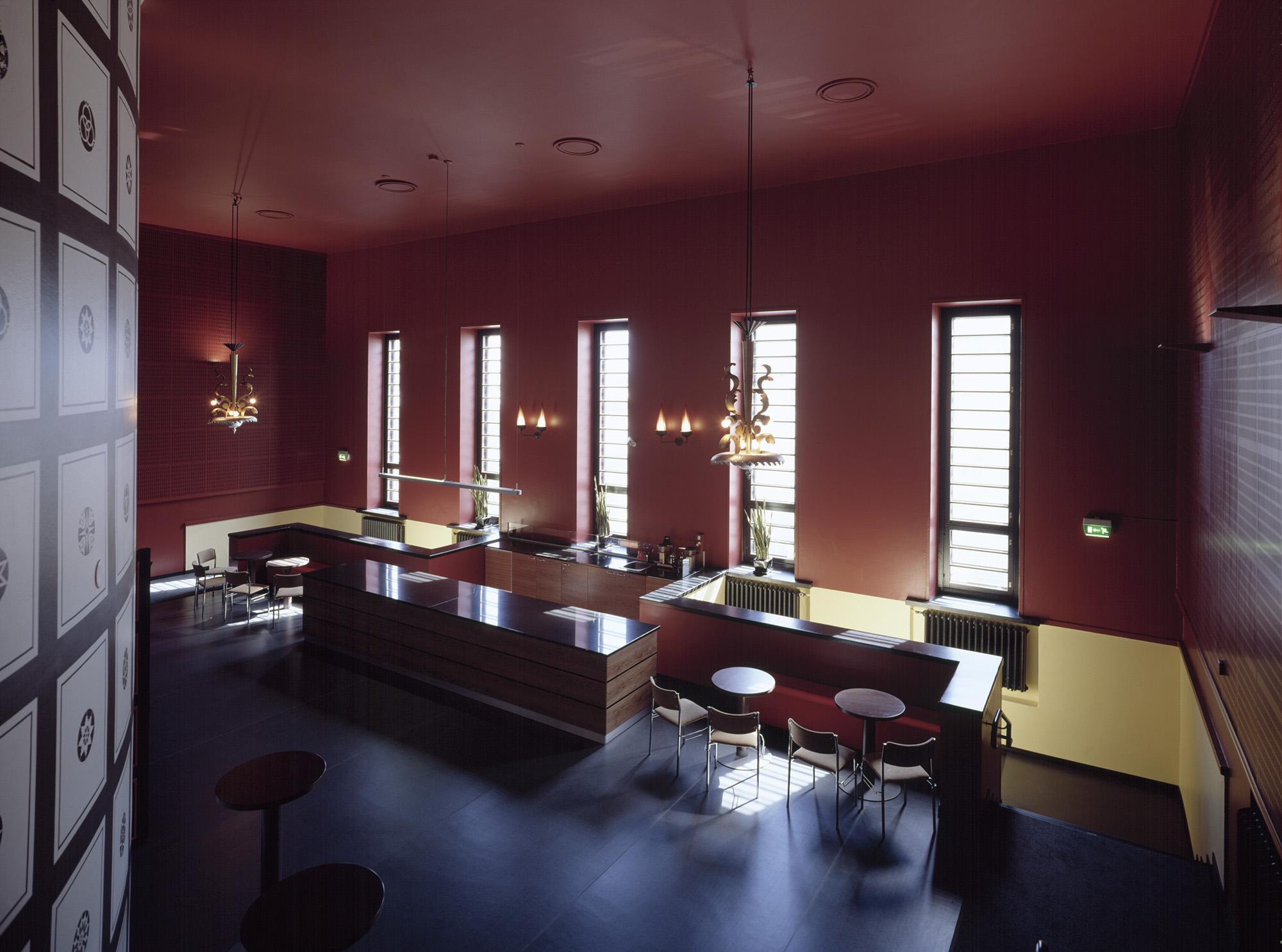
Jyväskylä Workers’ club building was the first notable public building that Alvar Aalto got to design after his graduation with Aino Aalto. Aalto was given the design commission for the new building in the city centre by the Jyväskylä Workers’ Association in 1924. The plans for the building were made in 1924 and it erected the following year. Aino and Alvar Aalto also designed the furniture, light fixtures, and fittings specially for this building.
This building also marked Aalto’s breakthrough and it is one of the principal works of Alvar Aalto’s Classical period. Workers’ club is also one of the most historically important building of its time. It was protected by law in the city plan already at the beginning of the 1970’s. The provincial government of Central Finland protected the building in 1978 and finally the Finnish Government protected the building in 1986.
The lower level of the building is basically a glazed colonnade containing a restaurant, two café rooms, and the entrance hall to the theatre. A monumental staircase leads up to the upper floor. The largely windowless upper floor contained an auditorium used for political assemblies and as a theatre with stage, parterre, balconies, and foyer. These facilities were used by the workers’ theatre and later by the city theatre until the new city theatre completed in 1982. Nowadays the building is used as a venue place for meetings and special occasions.
The foundation of the Jyväskylä Workers’ club were laid on 22nd of September in 1924. Into the stone foundation they hid old issues of their Työnvoima -magazine and the workers club 35-Year History, pictures and money.
When the Workers’ club completed it had a distinctively different character in the street scene of Jyväskylä. The building represents typical 1920s Nordic Classicism and it has features from Renaissance architecture. Such as the Palladian windows, the medallions details and the balustrades which dominate the facade. Also the restaurant space inside the building has a round atrium shape. The earliest sketches also show a large, colonnaded forecourt but it was not built.
Workers’ club has been refurbished and some changes have been made over the years. For example the restaurant spaces have later been fully remodelled. More restoration and repair work were done in the 1980’s and some parts of the building were brought back closer to the historically accurate condition. The latest renovation was in 2008 when the theatre space Aalto-sali was renovated.
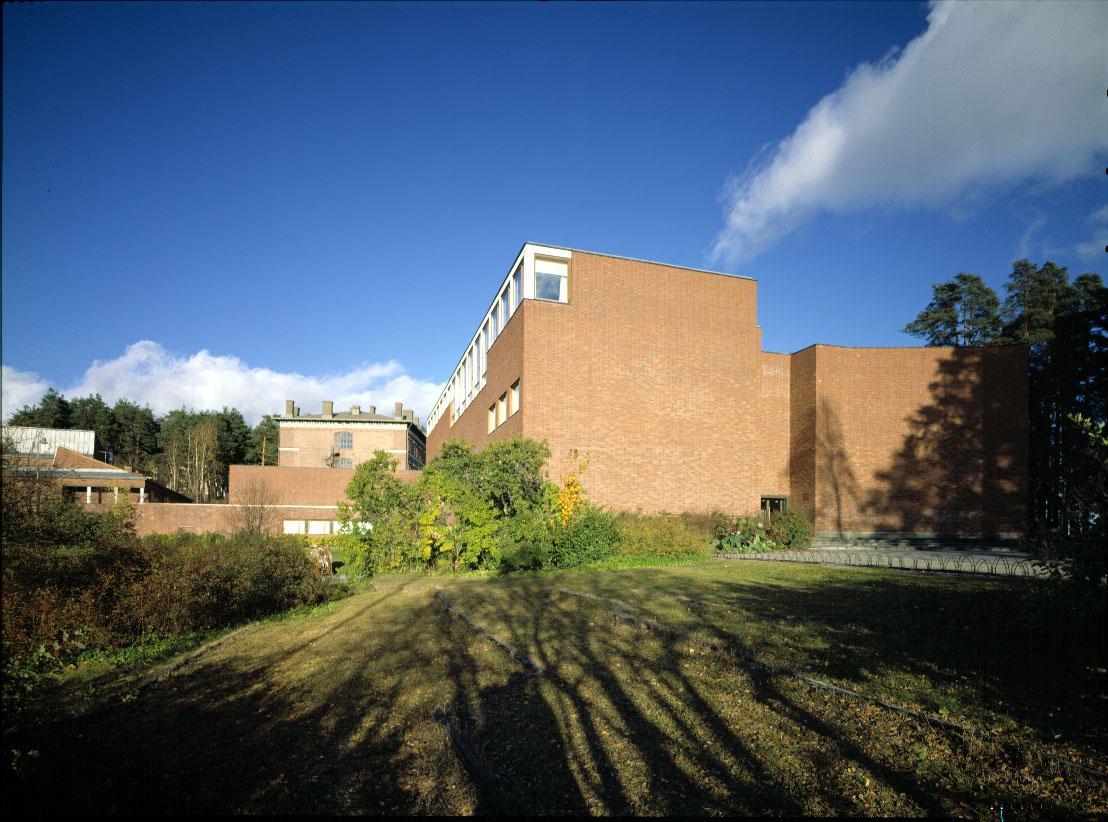
The first buildings at the Seminar Hill were built already in 1880’s. Konstantin Kiseleff’s redbrick buildings are the oldest buildings in the area. Seminar Hill and the Jyväskylä University Campus area is nowadays protected by law. The University area represents many historical layers and it is therefore considered to be one of the areas richness as well. It is also considered to be a good example of an area where modern and older buildings go together seamlessly.
The Jyväskylä University campus is largely made up of the buildings designed by Alvar Aalto for the Jyväskylä College of Education, later the University of Jyväskylä, in the 1950s. Aalto won the architectural competition with his URBS proposal in 1951. Various buildings were then completed all the way to the 1970’s based on Aalto’s plan. The proposal name URBS refers to a city and therefore all the buildings were placed to the area in a city-like form.
The layout, based on the winning competition proposal, is derived from the American campus principle. Originally, it consisted of buildings designed to serve both the teaching and administration of the College, including the main building and library, the teaching-practice school, the refectory and hall of residence, two gymnastics buildings, an indoor swimming pool built by the student union and subsequently extended several times, plus a residential building for the staff and a boiler house. Aalto’s original scheme forms a crescent or ’horse-shoe’ around the sports ground.
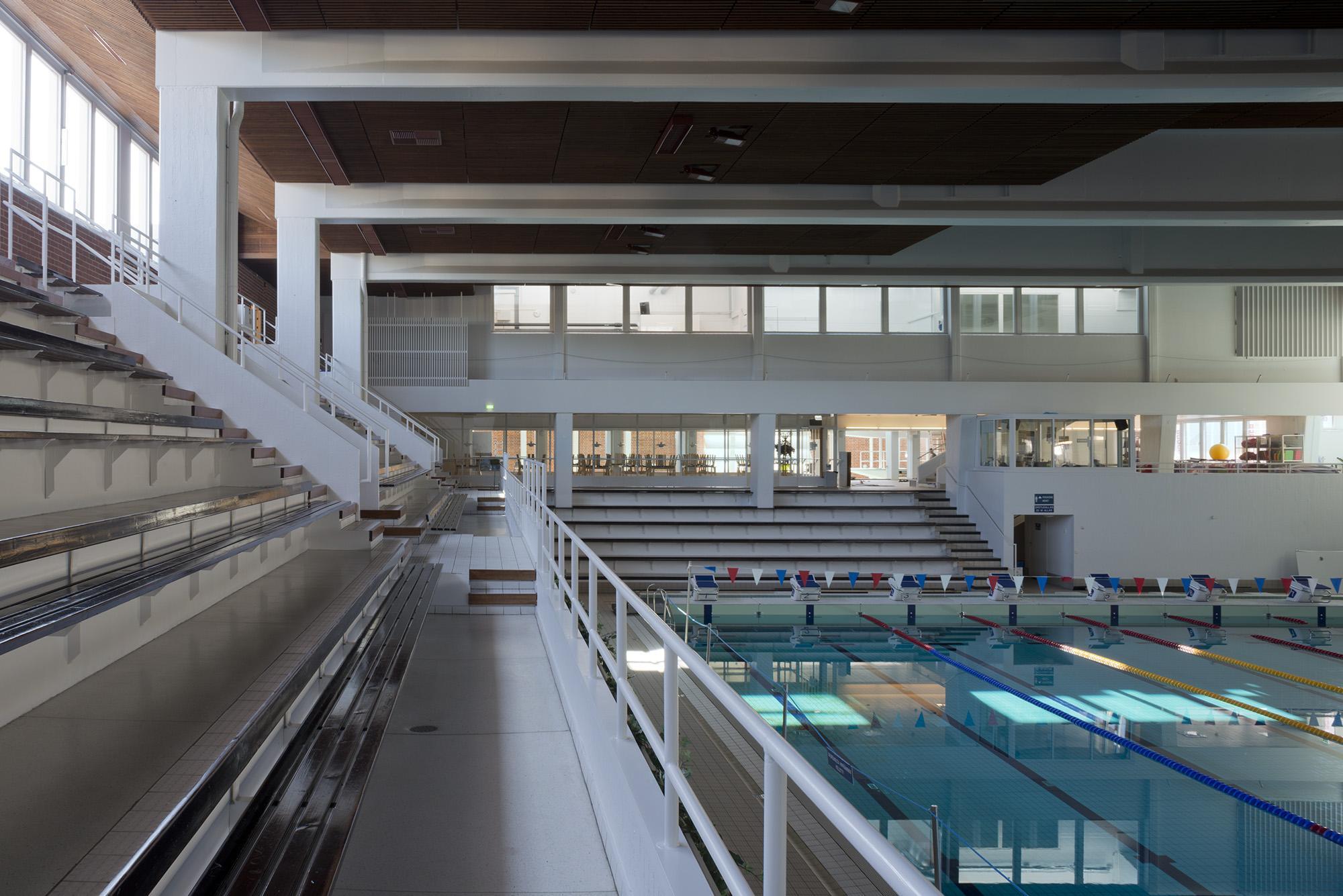
AaltoAlvari is the only swimming hall designed by Alvar Aalto. AaltoAlvari also has a gym, sports hall and a cafeteria. AaltoAlvari is also part of the main campus of the Jyväskylä University campus that was designed by Aalto as well. The original design of the swimming hall is from the 1950’s. Soon after its completion the desire was expressed to extend the building. Further extensions were made in the 1960’s, 1970’s and in the 1990’s. The oldest part of the swimming hall was completed in 1955 and it has a 25 meter swimming pool. In 1964 children pool was added and in 1968 the gym was built. In 1975 a 50 meter swimming pool was also added. The latest addition to the building is the spa section which was completed in 1991. Following the renovation in 1991 the swimming hall was converted into a versatile spa-like centre, and was given the name AaltoAlvari.
AaltoAlvari was protected by law in 1992, except for the spa section. AaltoAlvari has also been renovated over the years. The first renovation started in 1998 from the 1950’s part. The latest renovation was completed in 2013 and then the focus was for the 1970’s part. The spa section from the 1990’s is in its original state. Renovation for the spa section as well as adding an extension to it, is being planned. The goal of the future renovations is to make AaltoAlvari a leading water sports centre which will serve both the locals as well as travellers better.
In 1950’s it became more common to build swimming halls in Finland, however it often involved various arrangements for example concerning funding. In the case of Aalto’s swimming hall the client-developer was different than for all the other building on the campus, where it has been the National Board of Building, that is, the Finnish state. Here the client-developer was the University of Jyväskylä Student Union whom the city of Jyväskylä and the Finnish state partially funded as well. At the same time when the architectural competition for the campus area was in preparation in 1950, Jyväskylä Student Union was in the process of designing a hall with Ilmari Niemeläinen, who was an architect as well as a Olympia swimmer. Therefore the hall eventually became to be a part in the architectural competition for the campus as well.
In Aalto’s proposal URBS the new buildings were grouped around the sports field and he also preserved more of the older buildings in the area than the other competitors. URBS included the plans for the swimming hall and the Student Gymnasium Building already on the draft plan. The south-west end of the building was built adjoining to the Student Gymnasium Building. However, the main entrance to the swimming hall was designed on the north-west side of the building, that is, facing out from the campus area. On its completion the swimming hall was open not only to the college students but also to the citizens of Jyväskylä. This was one of the things in Aalto’s plan that got praised.
After Aalto won the competition, the swimming-hall also grew in size later. It was separated from the gymnasium building and a spectator seating and changing rooms and washrooms were added to the plan. The original sizes of changing rooms and washrooms meant that they could be used only by one group at a time. Aalto’s swimming hall opened for public on 19th of May 1955.
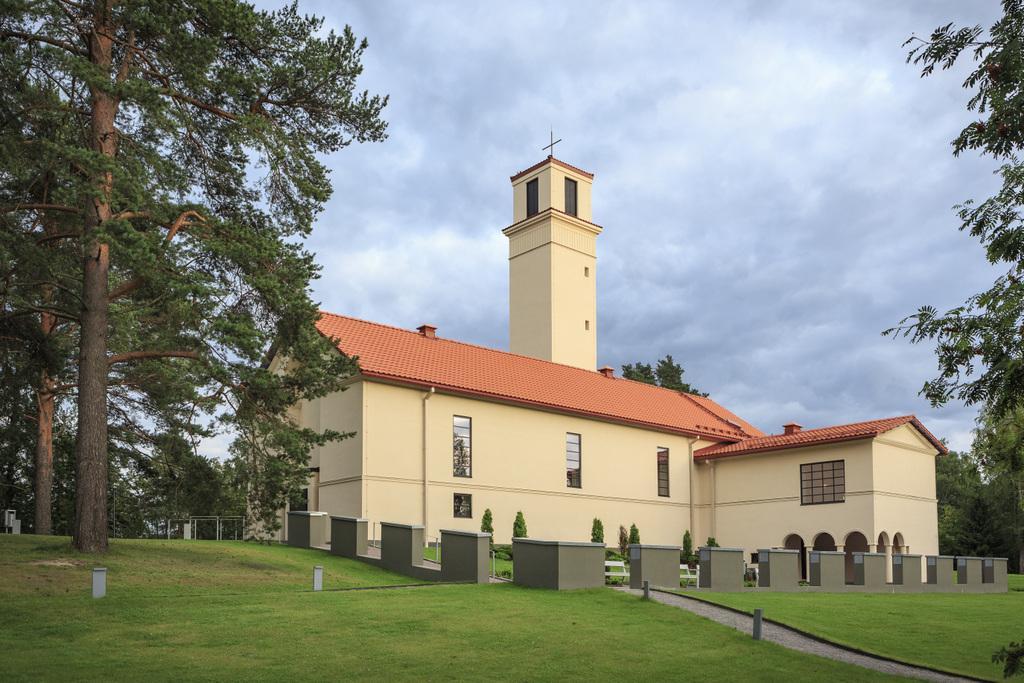
Alvar Aalto designed several church plans in 1920’s and Muurame church is the only one that was realised. Muurame church is considered to be a interphase in Aalto’s career. After Muurame church, Aalto gradually moved on from classism to functionalism.
The village of Muurame lies a few miles south of Jyväskylä, the town where Aalto opened his first architectural practice in 1923. It was only natural for the parish council to commission its new church from the closest qualified architect. Alvar Aalto had made his first trip to Italy in 1924, and his travel impressions are much in evidence in the church of Muurame.
Muurame church represents Nordic Classicism. Muurame church is located on a ridge and it is an important part of the cultural heritage in the area. The church is a single-aisle basilica with a tall campanile on one side of the rounded chancel. The interior has a barrel vault over a system of joists, the parish hall opens as a side chapel to the right of the chancel. A staircase leads down from this room to an exit with a loggia, which in Aalto´s original plan is surrounded by a rose garden.
Aino and Alvar Aalto designed the furnishings for the church together. The furnishings, designed fairly late in the project, took on elements of Aalto´s conversion to Modernism, and Aalto used Poul Henningsen lamps for interior lighting.
The interior of the Muurame church has undergone several changes over the years. Last time the interiors and exteriors of the Muurame church were renovated in 2016. The aim of the renovation was to restore the church to its original appearance. During the renovation, also Poul Hennigsen’s light fixtures were returned to the church. The latest renovation is considered to be successful.
William Lönnberg was commissioned to paint the altarpiece in 1929.

Travel in the sceneries from the various phases in the life of Alvar Aalto, from Seinäjoki via Kuortane and Alajärvi to Jyväskylä in the lake district of Finland. See the master’s birthplace and family grave, some of his most famous competition works as well as his early and later works.
Alvar Aalto designed a world-famous centre of administrative and cultural buildings in Seinäjoki. The landmark of the Aalto centre, the Cross of the Plains Church, soars to a height of approx. 65 metres. The renovated Aalto Library exhibits the world’s biggest private collection of Aalto glassware.
The architect was born in Kuortane and he used to spend his summers in Alajärvi, which is the home for the first buildings designed by the young architect student and for the last creation of Aalto’s office. In Alajärvi, the tour participants can also visit the recently renovated Villa Väinölä, the house that Alvar Aalto designed for his brother. The countryside provided Alvar Aalto with a setting for relaxation during his hectic creative period.
The Jyväskylä region contains more buildings designed by the master architect than any other region in the entire world. Among as many as 28 attractions, you can choose for example the Alvar Aalto Museum, Muurame Church and Säynätsalo Town Hall, which is considered Aalto’s most prominent work in the red brick era. Alvar Aalto also went to school, started a family and launched his prestigious career in Jyväskylä.










